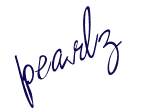Body Language = Nonverbal communication

“Now, I don’t speak Spanish, Japanese or French
But the way that body’s talkin’ definitely makes sense”


Body Language ~ Feat T-Pain – Jesse Mccartney Music Code
Nonverbal communication is a broad term used to describe any method of transferring information without words. Nonverbal communication may be intentional, it may be based on societal cues, or it may be completely unconscious.
Body language is a form of nonverbal communication, which consists of body posture, gestures, facial expressions, and eye movements. Humans send and interpret such signals subconsciously. <wikipedia] Fashion, personal grooming, graphical signs and design are also common forms of nonverbal communication. In many modern cultures is a hugely important way in which people telegraph things about themselves.
Fashion, personal grooming, graphical signs and design are also common forms of nonverbal communication. In many modern cultures is a hugely important way in which people telegraph things about themselves.
Words Are Not Enough: There are instances in which body language is found to be more effective as compared to verbal communication, such as in the cases of directions, shapes, inclination towards someone and personalities.
 Increased Authenticity: As body language cannot be easily controlled when compared to spoken words, they can be considered to be more genuine. Most people are blissfully unaware of their own gestures, unaware of their own body language in communication, let alone anyone else’s. These gestures are deep communications that emerge directly from our unconscious mind. So if you decide to start acknowledging gestures, you are communicating with someone’s unconscious mind and processes. Body language is in fact extremely powerful in expressing a person’s inner feelings.
Increased Authenticity: As body language cannot be easily controlled when compared to spoken words, they can be considered to be more genuine. Most people are blissfully unaware of their own gestures, unaware of their own body language in communication, let alone anyone else’s. These gestures are deep communications that emerge directly from our unconscious mind. So if you decide to start acknowledging gestures, you are communicating with someone’s unconscious mind and processes. Body language is in fact extremely powerful in expressing a person’s inner feelings.
Why is non-verbal communication important?
Basically, it is one of the key aspects of communication (and especially important in a high-context culture). It has multiple functions: 
- Used to repeat the verbal message (e.g. point in a direction while stating directions.
- Often used to accent a verbal message. (e.g. verbal tone indicates the actual meaning of the specific words).
 Often complement the verbal message but also may contradict. Example: a nod reinforces a positive message; a ‘wink’ may contradict a stated positive message.
Often complement the verbal message but also may contradict. Example: a nod reinforces a positive message; a ‘wink’ may contradict a stated positive message. - Regulate interactions (non-verbal cues covey when the other person should speak or not speak).
- May substitute for the verbal message (especially if it is blocked by noise, interruption, etc) — i.e. gestures (finger to lips to indicate need for quiet), facial expressions (i.e. a nod instead of a yes).
Note the implications of the proverb: “Actions speak louder than words”. Equally/more important as what you say is the way that you say it. In essence, this underscores the importance of non-verbal communication. Non-verbal communication is especially significant in intercultural situations. Probably non-verbal differences account for typical difficulties in communicating.
Statistics imply that without body language, up to 50 to 65 percent of human communication is lost, or at least unreadable. In the early 1970s, Albert H. Mehrabian, a researcher, conducted an experiment on the effects of nonverbal aspects of communication.  The findings of that particular study revealed that the words we speak only convey about seven percent of the overall message being sent, with 38 percent attributed to voice tone and 55 percent to body language. The subconscious things we do with our hands, facial expressions and body language can often communicate more clearly what we are really saying.
The findings of that particular study revealed that the words we speak only convey about seven percent of the overall message being sent, with 38 percent attributed to voice tone and 55 percent to body language. The subconscious things we do with our hands, facial expressions and body language can often communicate more clearly what we are really saying.
However, Mehrabian's main findings are more about the importance of visuals and the degree to which we rely on them when communicating with another.
The process of understanding non-verbal and verbal elements can be described as follows: Neural pathways bring information to the brain through the senses. Information entering through eyes or ears goes first to the thalamus, to the large part of the limbic system. The thalamus could be compared to a mail sorter. It decides to which parts of the brain to send the information.  If the incoming information is emotional, the thalamus sends out two signals – the first to the amygdale and the second to the neocortex. As a result, the emotional brain, the limbic system, receives the information first. The ability of interpreting the meaning of the discourse, does not only concern the notion of Intelligence Quotient, but also the Emotional Quotient.
If the incoming information is emotional, the thalamus sends out two signals – the first to the amygdale and the second to the neocortex. As a result, the emotional brain, the limbic system, receives the information first. The ability of interpreting the meaning of the discourse, does not only concern the notion of Intelligence Quotient, but also the Emotional Quotient.
Reference:
eHow all about body language and communication, Educational Club Malaysia, aiic.net, Changing Minds.org
















